Parallax Press
P.O. Box 7355
Berkeley, CA 94707
www.parallax.org
Parallax Press is the publishing division of Unified Buddhist Church, Inc.
2003 by Unified Buddhist Church.
All rights reserved.
Cover drawing by Nguyen Dong.
Cover and text design by Gopa & Ted2, Inc.
Library of Congress Cataloging-in-Publication Data
Nht Hanh, Thch.
Joyfully together : the art of building a harmonious community / Thich Nhat Hanh.
p. cm.
ISBN 1-888375-32-9 (pbk.)
Ebook ISBN: 978-1-935209-16-4
1. Religious lifeBuddhism. 2. BuddhismDoctrines. I. Title. BQ5395 .N46 2003
294.3378dc21
2003013953
v3.1
 Contents
Contents Introduction
IntroductionE VER SINCE I was a young monk, my dream has been to build a happy Sangha. Now, after sixty years of monastic practice, I continue to feel that Sangha building is the most precious work that we can do as practitioners. The Sangha is our community of practice, and it is also our refuge. We rely on it and trust it to support our deepest aspirations and to give us energy and inspiration on the path of practice.
The practices in this book are all real methods that we have used to resolve real conflicts in our own practice community of Plum Village. Each practice has arisen in response to the true needs, difficulties, and aspirations of the members of the Sangha. These practices and methods of transformation can also be applied to communities of practice, to families, to nonprofit and professional organizations, and to government entities. We all live and function within different kinds of communities, and any community or organization will benefit from the kinds of practices that will improve communication and mutual understanding and support among the members.
Many practices described heresuch as Shining Light, Beginning Anew, the role of the abbot and abbess, the mentor system, the Day of Living Together as a Spiritual Family, the Sutra on Measuring and Reflecting, and the Seven Methods of Resolving Conflictshave their roots in traditional monastic practices used in the Buddhist community for over 2,600 years. We have looked deeply into these traditional practices to understand the essence of them, and we have refreshed these practices, offering them in a new way that is more suitable and inspiring for us today.
Other practices offered in this book are innovations, not found before in Buddhist traditions but always inspired by them. These practices also came out of our looking deeply into the essential teachings of the Buddha and the real needs of our community. These practices include the Second-body System, the Caretaking Council, Sangha Eyes, Practicing with the Triangle, and family practices such as the Cake in the Refrigerator and the Breathing Room.
All of the practices and teachings in this book help us to ensure the harmony and happiness of the entire Sangha body. When there is happiness in a Sangha, that Sangha can help so many people.
Any group of people can practice as a Sangha, as a community that is determined to live in harmony and awareness. All we have to do is commit ourselves to going together in the direction of peace, joy, and freedom. Together, we benefit from each others strengths and learn from each others weaknesses. A family is a Sangha; the members of a monastic and lay practice center are a Sangha; even the United Nations is a Sangha! A Sangha is a family, a spiritual family connected by the practices of mindfulness, concentration, and insight. The Sangha may be Buddhist, or even non-Buddhist, so long as it is a community that walks the path of liberation together.
To fulfill this goal, we need concrete practices, we need the collective insight and wisdom to guide and support us. The Buddha needs intelligent and creative disciples to continue the tradition of understanding and love and make it fresh and vital in our modern world. Together, we can seek liberation from fear, suffering, misunderstanding, and confusion. Please be courageous in your efforts to apply these teachings to your own life for the benefit of yourself, your family, your community, and the world.

CHAPTER 1
The Power of the Sacred ForestA S ANGHA is a community of peoplemonks, nuns, laymen, and laywomenwho are walking together on a spiritual path. A Sangha has a great deal of strength; its members are able to protect each other, to help each other in every aspect of the practice, and to build the strength of the Sangha. We can take refuge in the Sangha in order to succeed in our practice. There are many things that are very difficult for us to do on our own, but when we live together as a Sangha, they become easy and natural. We do them without growing tired or making a strenuous effort. The Sangha has a collective energy. Without this energy, the practice of individual transformation is not easy.
We can also use the expression Sangha body. When we live together in the Sangha it becomes a body, and each one of us is a cell in that body. If we are not part of the Sangha body, we will be isolated, hungry, and needy, and we will not have a suitable environment for practice. We can visualize the Sangha body as a forest. Each member of the Sangha is a tree standing beautifully alongside the others. Each tree has its own shape, height, and unique qualities, but all are contributing to the harmonious growth of the forest. Looking at the trees standing steadily alongside each other like that, you can sense the beauty, solidity, and power of a sacred forest.
Our Sangha body is going forward on the path of practice and its eyes are able to direct us. The eyes of the Sangha are able to see the strong points as well as the weak points of every member of the Sangha. By Sangha Eyes, we mean the insight and vision of the collective body of the Sangha, which includes the vision and insight of all of its members from the youngest to the eldest. Although the contribution of everyones insight is necessary for the Sangha insight to be clear, it is not just a simple adding up of individual insights. The collective insight has a strength, a wisdom, and a vitality of its own, which surpasses any individual insight.
We learn how to use the eyes of the Sangha, considering them to be our own. If you know how to use the eyes of the Sangha, you will make your Sangha body stronger and healthier every day. Whenever the Sangha body praises or instructs you, please kneel down with joined palms and listen deeply to everything that is said. It is the Sangha that helps us make progress on the path of practice. If we respond with pride and egotism, we will never be able to make progress. We need to hear the truth about ourselves as others see it.
The energy of the Sangha body has the capacity to protect and transform us. As a member of the Sangha, all we have to do is to make our contribution to that energy. This is called Sangha building. It is the most precious work a monk, nun or layperson can do.
Each one of us needs to build the Sangha, because the Sangha is our place of refuge. The best way of building the Sangha is to turn ourselves into a positive element of the Sangha body by the way we walk, stand, sit, or lie down in mindfulness. When others in the Sangha can see our stability in this way, they also will become solid.


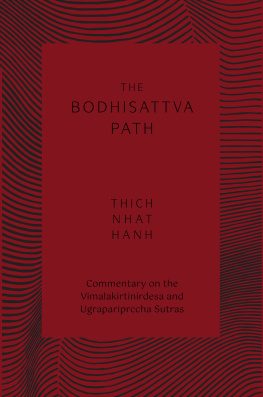


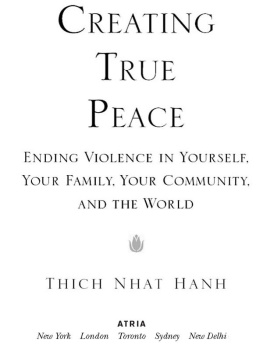
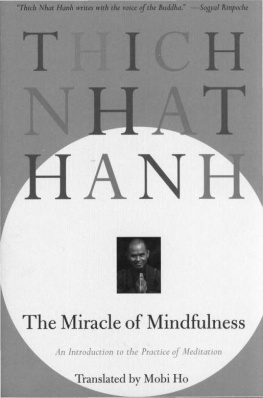
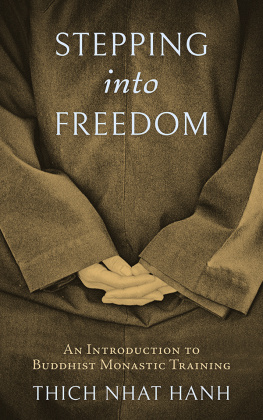
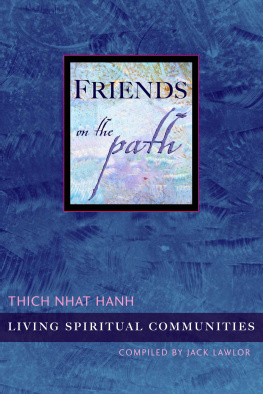

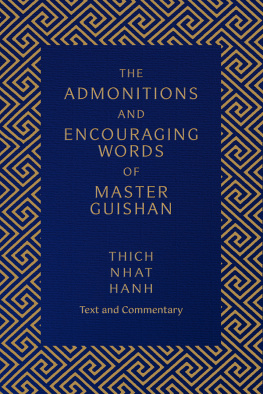
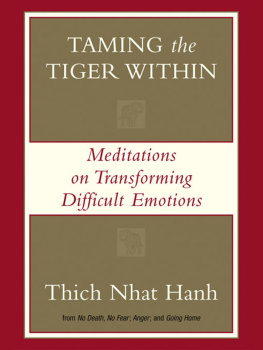

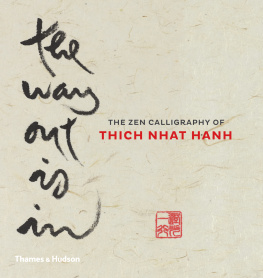
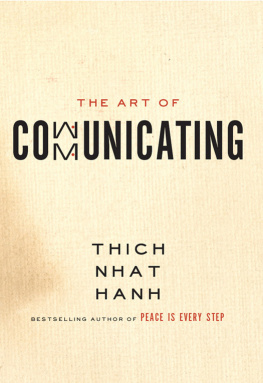
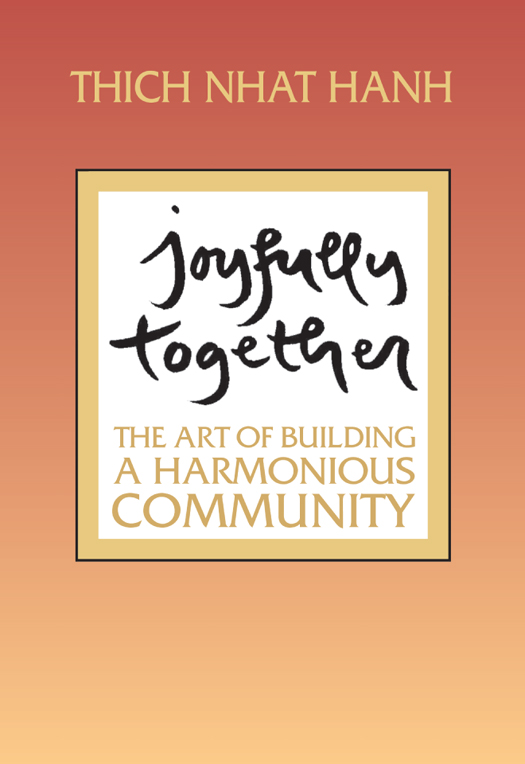
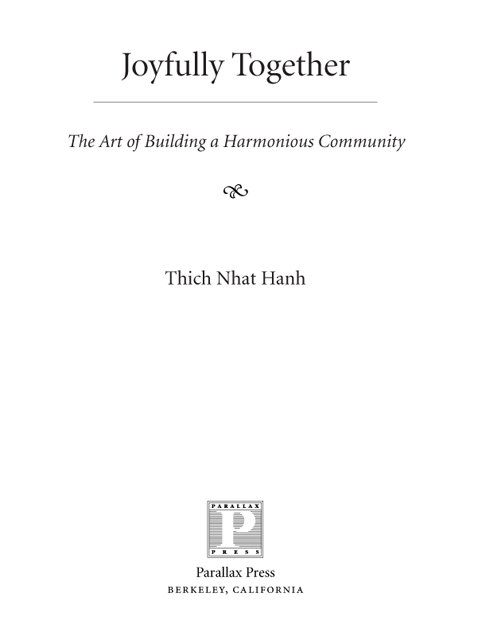
 Contents
Contents